Abstract
Both an oral and a parenteral form of a 6β-amidinopenicillanic acid derivative were found to have appreciable activity against gram-negative bacteria and poor activity against gram-positive bacteria in vivo. When administered orally or parenterally, definite synergy was demonstrated between the amidinopenicillins and ampicillin, amoxicillin, benzylpenicillin, cefazolin, or carbenicillin in infections with a number of gram-negative bacteria, including Klebsiella, Enterobacter, Escherichia, Proteus, Salmonella, and Haemophilus species in mice. Synergy was also observed between the parenteral amidinopenicillin and benzylpenicillin in the Staphylococcus aureus infection but not in infections with other gram-positive organisms. No synergy was demonstrated between the parenteral amidinopenicillin and erythromycin or oxytetracycline in infections with gram-positive or gram-negative organisms. Synergy between the parenteral amidinopenicillin and gentamicin was observed only in the case of Escherichia coli.
Full text
PDF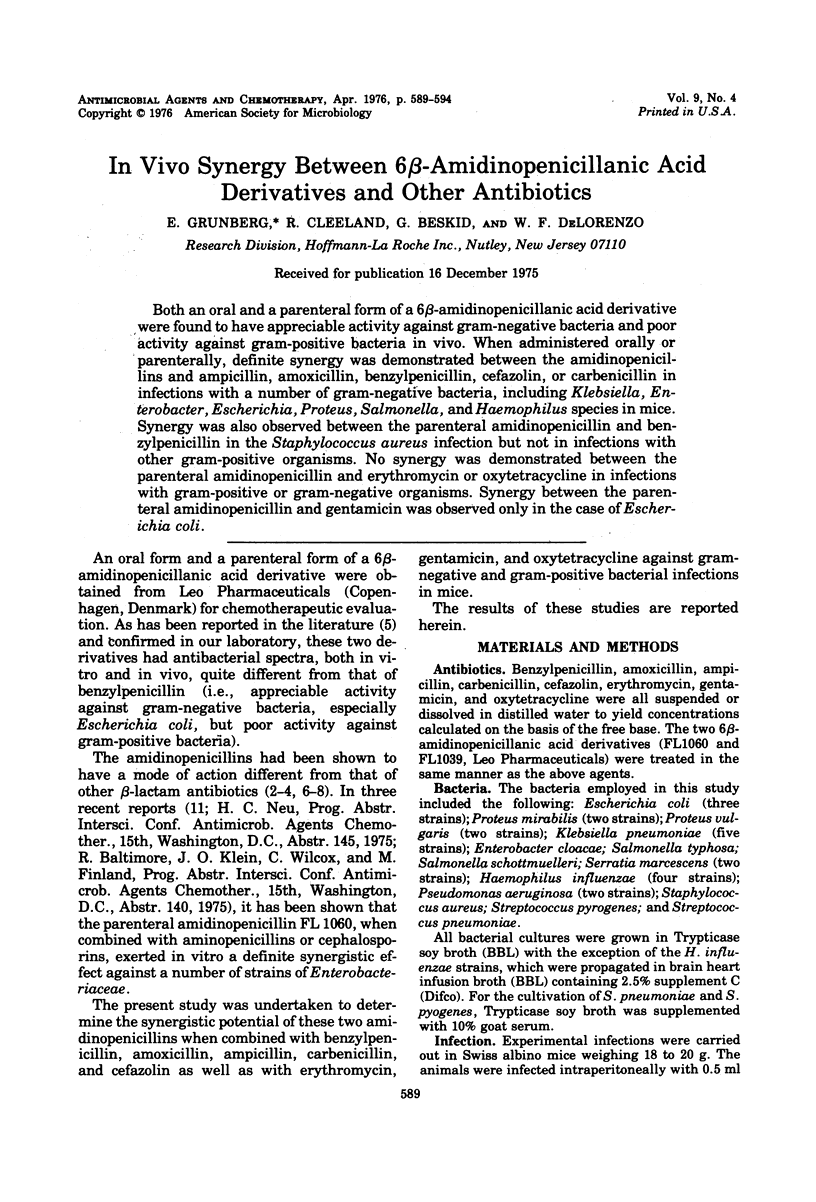
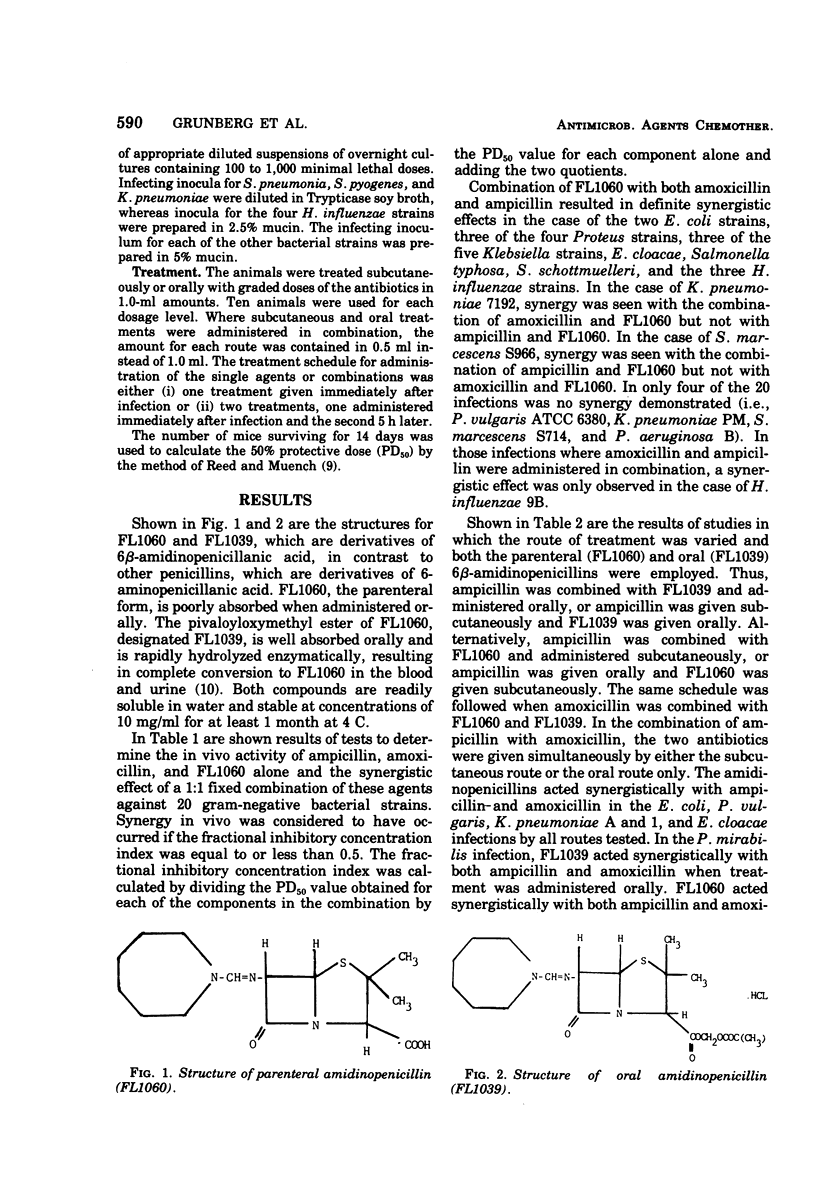
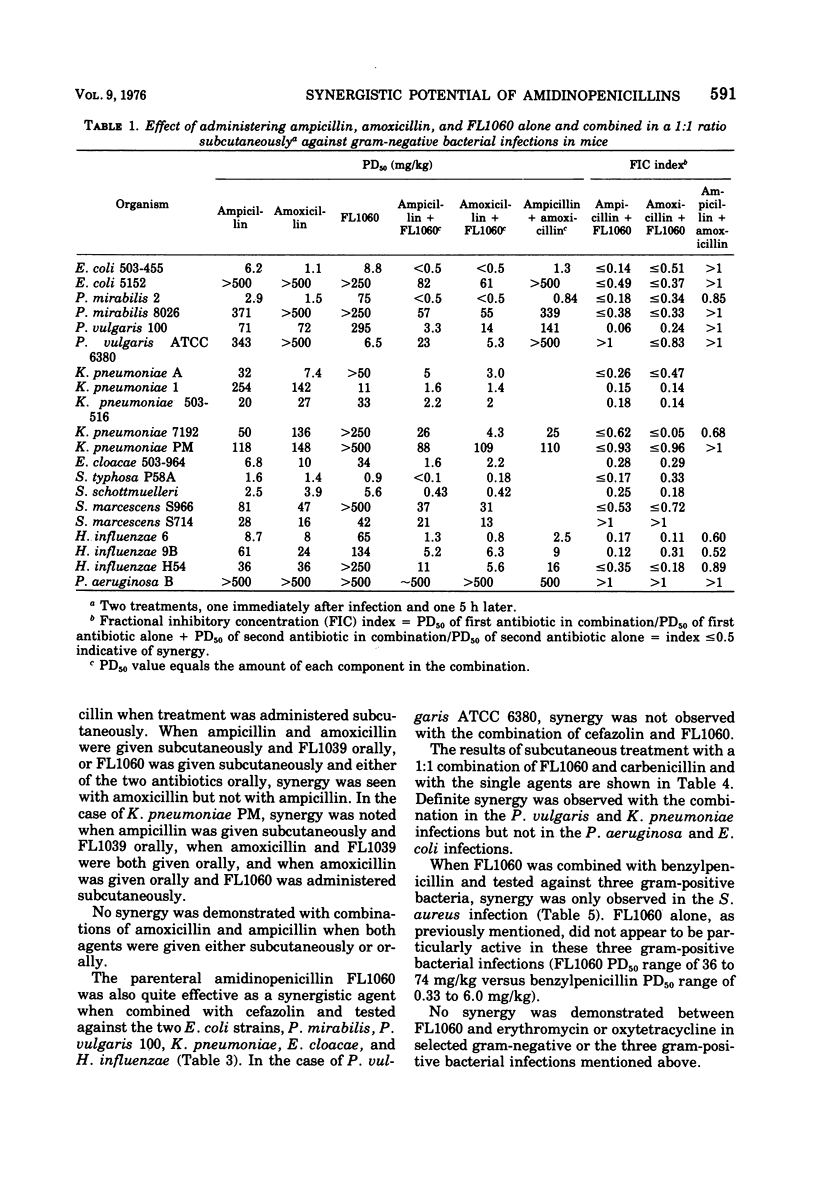

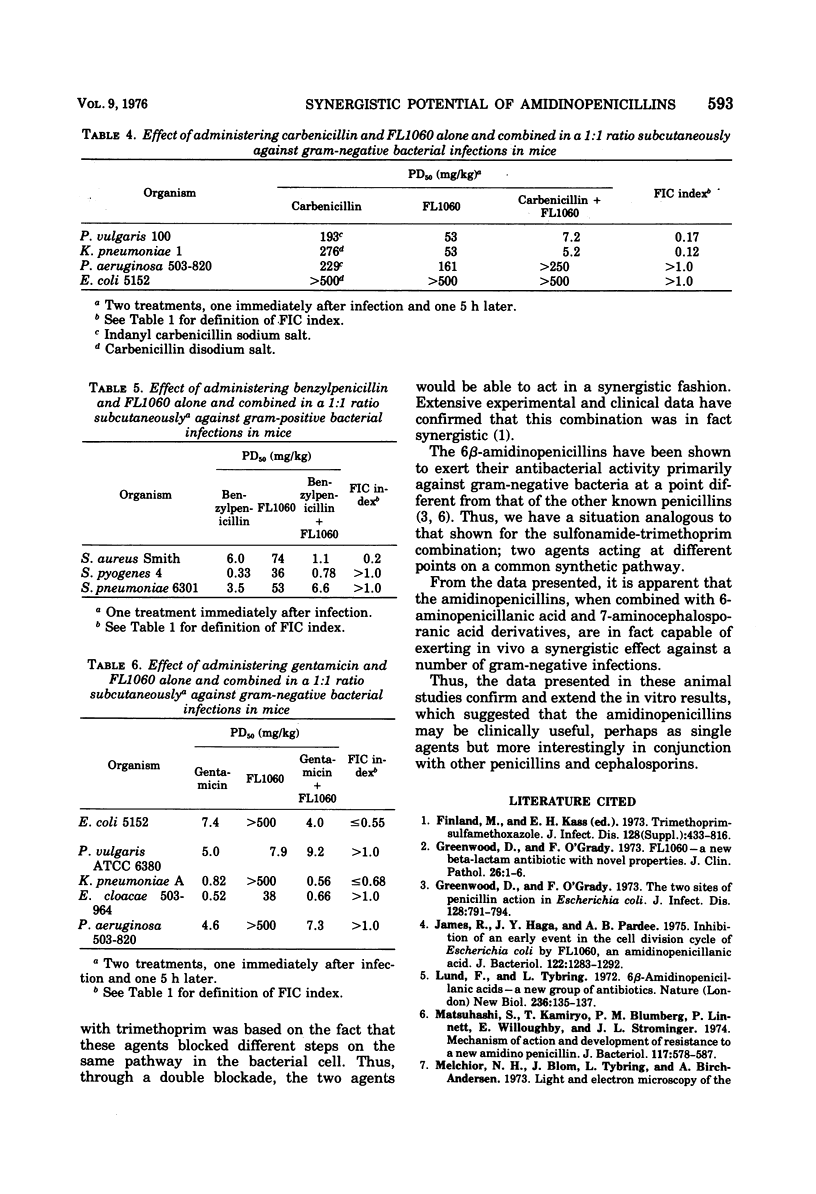
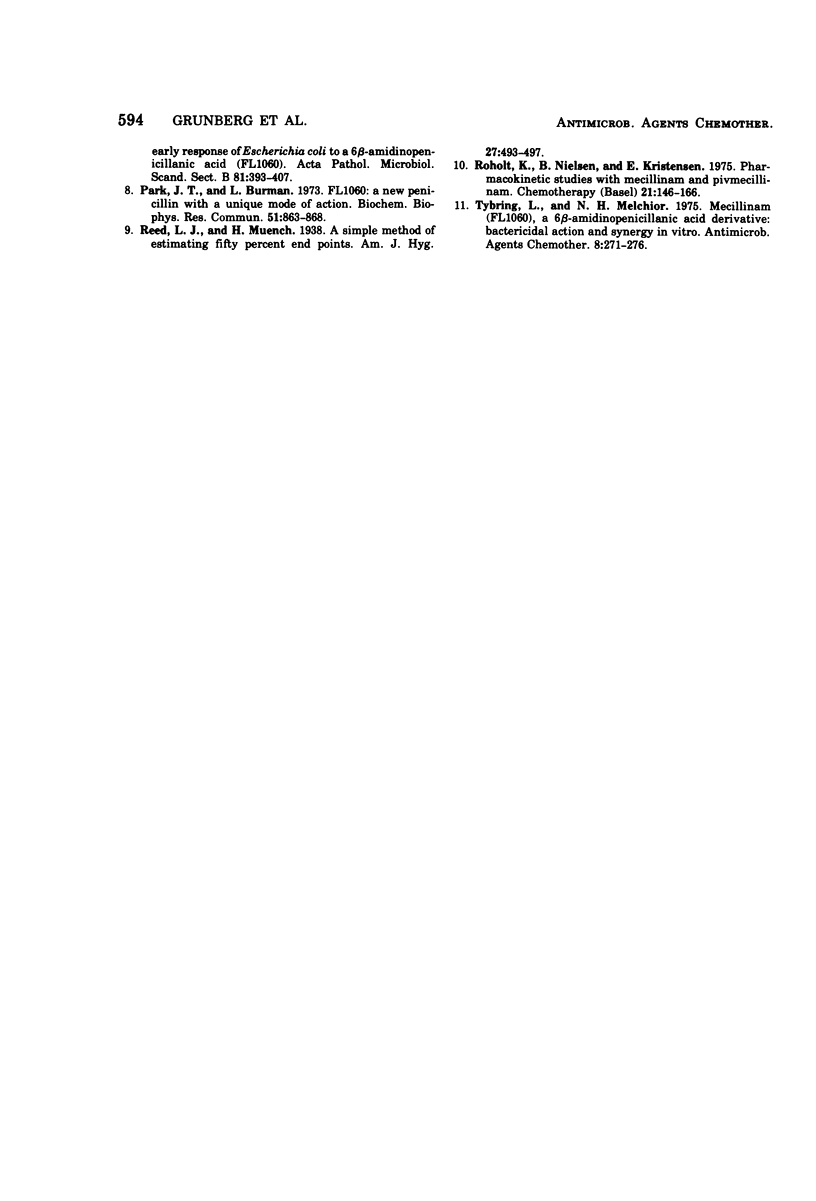
Selected References
These references are in PubMed. This may not be the complete list of references from this article.
- Finland M., Kass E. H. Trimethoprim-sulfamethoxazole. Summary and comments on the conference. J Infect Dis. 1973 Nov;128(Suppl):792–816. doi: 10.1093/infdis/128.supplement_3.s792. [DOI] [PubMed] [Google Scholar]
- Greenwood D., O'Grady F. FL 1060: a new beta-lactam antibiotic with novel properties. J Clin Pathol. 1973 Jan;26(1):1–6. doi: 10.1136/jcp.26.1.1. [DOI] [PMC free article] [PubMed] [Google Scholar]
- Greenwood D., O'Grady F. The two sites of penicillin action in Escherichia coli. J Infect Dis. 1973 Dec;128(6):791–794. doi: 10.1093/infdis/128.6.791. [DOI] [PubMed] [Google Scholar]
- James R., Haga J. Y., Pardee A. B. Inhibition of an early event in the cell division cycle of Escherichia coli by FL1060, an amidinopenicillanic acid. J Bacteriol. 1975 Jun;122(3):1283–1292. doi: 10.1128/jb.122.3.1283-1292.1975. [DOI] [PMC free article] [PubMed] [Google Scholar]
- Lund F., Tybring L. 6 -amidinopenicillanic acids--a new group of antibiotics. Nat New Biol. 1972 Apr 5;236(66):135–137. doi: 10.1038/newbio236135a0. [DOI] [PubMed] [Google Scholar]
- Matsuhashi S., Kamiryo T., Blumberg P. M., Linnett P., Willoughby E., Strominger J. L. Mechanism of action and development of resistance to a new amidino penicillin. J Bacteriol. 1974 Feb;117(2):578–587. doi: 10.1128/jb.117.2.578-587.1974. [DOI] [PMC free article] [PubMed] [Google Scholar]
- Park J. T., Burman L. FL-1060: a new penicillin with a unique mode of action. Biochem Biophys Res Commun. 1973 Apr 16;51(4):863–868. doi: 10.1016/0006-291x(73)90006-5. [DOI] [PubMed] [Google Scholar]
- Roholt K., Nielsen B., Kristensen Pharmacokinetic studies with mecillinam and pivmecillinam. Chemotherapy. 1975;21(3-4):146–166. doi: 10.1159/000221856. [DOI] [PubMed] [Google Scholar]
- Tybring L., Melchior N. H. Mecillinam (FL 1060), a 6beta-amidinopenicillanic acid derivative: bactericidal action and synergy in vitro. Antimicrob Agents Chemother. 1975 Sep;8(3):271–276. doi: 10.1128/aac.8.3.271. [DOI] [PMC free article] [PubMed] [Google Scholar]


